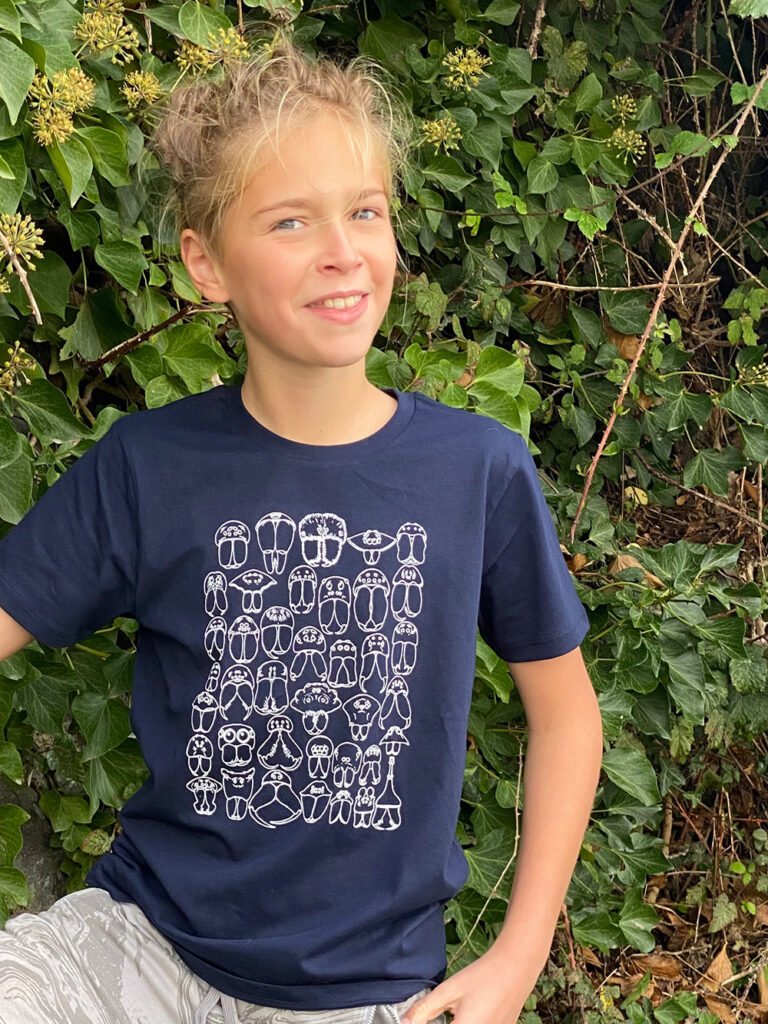Spider Face Off
So how did an obsession with spider faces begin? When I was 14, my arachnophobic Mum came home from work one late October evening and handed me (the arachnophilic little monster she’d created) a book that she’d spotted in the library. Hallowe’en was approaching, we shared a love of it. Perhaps she called me Ian because it appears every time I meet someone… “Hallo Ian”.
The world of spiders
The book might have arrived from a witch’s cave; it had a very arty picture of an orb-web on the cover and was called, The World of Spiders. On opening it, I was a little disappointed at first because the tarantula section I immediately searched for was not there because… they’re not here. It should perhaps have been called The World of Spiders of the British Isles; a bit of a mouthful but it was my first look inside a Collins New Naturalist book; succulently interesting and authoritative series on the nature of our islands.

The author, William Syers Bristowe had written this classic in the 1950s. He was not a full time naturalist but he was a spider expert and equally expert in imparting his enthusiasm.
I realised as I flicked through the pages that this book was so much more useful to me than a book about spiders of the World. It was about the spiders around me, the ones I might actually find. I was entangled in Bristowe’s expertly woven web. Won’t you come closer and see?
Face to face with spider faces
It was sumptuously illustrated and, most delicious of all was the start of each chapter where a new spider’s face was waiting for me.

There are over 660 species of spider in the British Isles, many of which require microscopic examination to tell them apart but, they can be grouped into 38 or so families who each share a family resemblance in a way all too familiar to ourselves, their facial appearance. They have distinctive eye arrangements. For anyone beginning to study this immense subject, it is probably best to understand families first and where better to start than the family face? About 10 families have only one species in this country so, by recognising the family you’ve recognised the species too, and many families have 10 or less species so they are very useful for breaking the subject into digestible pieces.

Getting into nature
Today I fear that a fear of spiders in a child or their parents may become a barrier to them actually getting into nature. Better not to go into those bushes, or turn that log or rummage in that outhouse.
A fascination or tolerance for spiders could turn the world around I feel.
Why, because we are losing the wild, losing species and diminishing the diversity and beauty of our planet through ignorance, fear and a whole load of other undesirable human traits, and it will take a new generation, in tune with the natural world to save it.
That generation currently play and learn on electronic tablets and most of their outdoor world is streets or sports fields when what they need is the wild. I’ve never seen Bristowe’s British spider faces as a full set. I really wanted to see it happen so here it is my homage to the spidermaster. I have simplified them by omitting most hairs, bristles and pigment which removes those unnecessary distractions.
Spider Faces T-shirt
This T-shirt gets spider faces out on the street.


So I dare you to face either scary spiders or the even scarier arachnophobes with their lurking hysteria. The spiders are set to face the public and make a talking point of this important subject.
P.S. If you’d like your own copy of Bristowe’s book – I’ve found it here!


